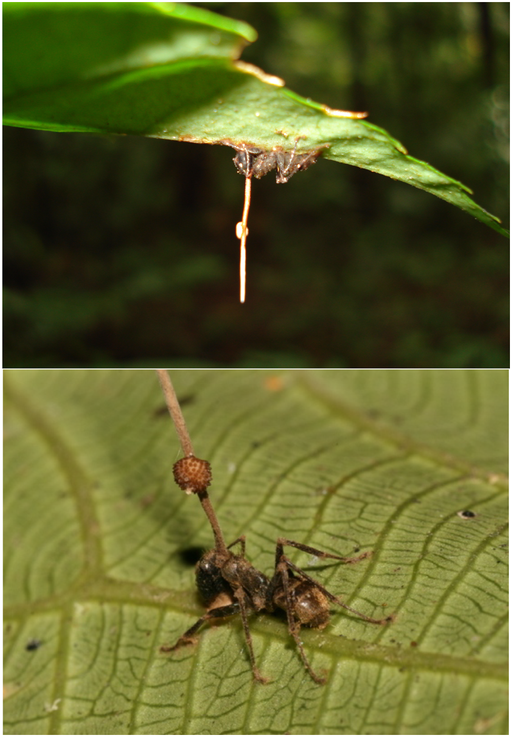Fungi Zombify Specific Ant Species
| Marc Maligalig | | Sep 10, 2014 12:32 AM EDT |
(Photo : Wikimedia Commons) Ophiocordyceps unilateralis
A scientific study has discovered that Ophiocordyceps unilateralis sensu lato, a species of parasitic fungus, is specific in choosing its hosts.
The fungus, which is known to manipulate an afflicted ant's brain, doesn't choose just any ant to zombify. Instead, the parasite can somehow identify the species of ant, and when faced with the preferred host, releases its chemical cocktail to control the ant's brain.
Like Us on Facebook
"Behavioral manipulation is such a complex [characteristic] that it only occurs when there's a very close coevolution between pathogen and host," said molecular biologist and study leader Charissa de Bekker from the Pennsylvania State University.
De Bekker and her colleagues published a paper on the Ophiocordyceps unilateralis sensu lato.
She said the team theorizes that every parasitic fungi has a specific ant species it chooses to infect.
The members of the Ophiocordyceps genus require ants to complete their life cycle. The genus' fungal spores are found in the environment.
When a candidate ant stumbles upon the spores, it quickly becomes infected with the fungus that then spreads throughout its body.
Inside the insect's head, the fungal cells release compounds that overrides the central nervous system of the ant.
The zombie ant is then instructed to climb up the terrain and vegetation, bite down onto a branch, twig or leaf and is then killed by the fungus.
After the execution, the fungus grows a stalk capable of releasing spores out the back of the head of the ant. The spores infect other ants travelling beneath the corpse.
The research team used the Ophiocordyceps unilateralis sensu lato, which is a temporary name for the fungus until a proper one is given, species of the fungus.
Four ant species (Camponotus americanus, Camponotus castaneus, Formica dolosa and Camponotus pennsylvanicus) were used as hosts.
While all are found in the same area, two of the species are normally victimized by the fungus and two aren't.
Scientists then injected fungal materials into the subjects while two sets of ants were controls.
One set had fungus-free injections and the other was left alone. All specimens of the F. dolosa that were injected with anything died shortly after the procedure.
The fungus then proceeded to kill all of the Camponotus species but only the minds of the two known hosts were controlled.
TagsFungus, Ants, Insect, Chemicals, Mind Control, Ophiocordyceps unilateralis, Science, scientific research
©2015 Chinatopix All rights reserved. Do not reproduce without permission
EDITOR'S PICKS
-

Did the Trump administration just announce plans for a trade war with ‘hostile’ China and Russia?
-

US Senate passes Taiwan travel bill slammed by China
-

As Yan Sihong’s family grieves, here are other Chinese students who went missing abroad. Some have never been found
-

Beijing blasts Western critics who ‘smear China’ with the term sharp power
-

China Envoy Seeks to Defuse Tensions With U.S. as a Trade War Brews
-

Singapore's Deputy PM Provides Bitcoin Vote of Confidence Amid China's Blanket Bans
-

China warns investors over risks in overseas virtual currency trading
-

Chinese government most trustworthy: survey
-

Kashima Antlers On Course For Back-To-Back Titles
MOST POPULAR
LATEST NEWS
Zhou Yongkang: China's Former Security Chief Sentenced to Life in Prison

China's former Chief of the Ministry of Public Security, Zhou Yongkang, has been given a life sentence after he was found guilty of abusing his office, bribery and deliberately ... Full Article
TRENDING STORY

China Pork Prices Expected to Stabilize As The Supplies Recover

Elephone P9000 Smartphone is now on Sale on Amazon India

There's a Big Chance Cliffhangers Won't Still Be Resolved When Grey's Anatomy Season 13 Returns

Supreme Court Ruled on Samsung vs Apple Dispute for Patent Infringement

Microsoft Surface Pro 5 Rumors and Release Date: What is the Latest?










